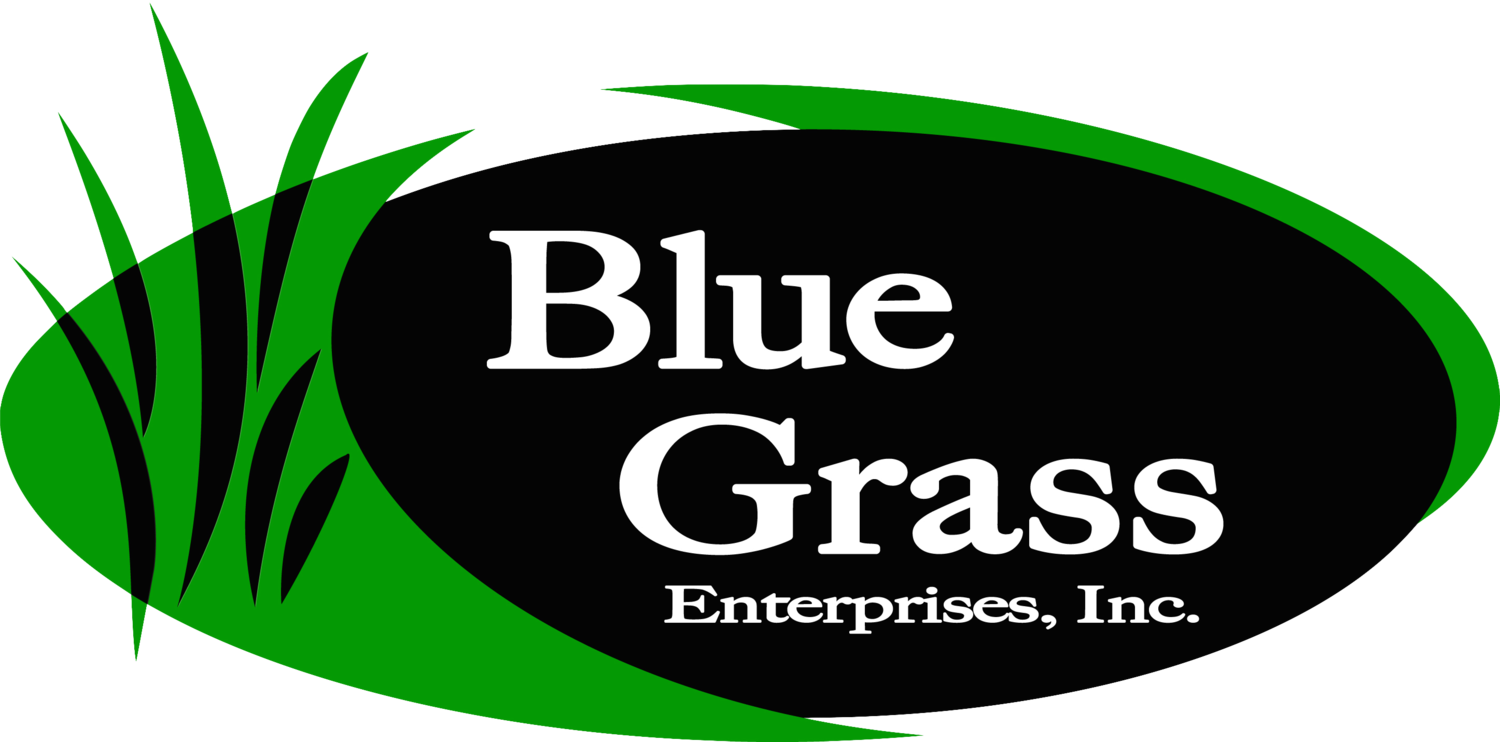Actual photo of Sarah checking new sod at her house in 2016
I’m going to go out on a limb and guess that if you are looking at this post, you have a relatively new lawn, and if so, thank you for supporting our small business! We are grateful for your purchase and your questions. Our goal is to provide supreme products along with lifelong support and service for your lawn. Feel free to contact us any time about any questions you may have regarding the care of your lawn. We’re here to help.
Young-lawn care is a bit of a moving target, so I’ll do my best in this blog to address many stages and situations. So hang on for a rough preview of the next six years of your lawn’s life!
Why do I say six years? Because my lawn is currently six years old, so I feel like I can speak very specifically about what my experience has been with a newly constructed lawn. So if you don’t want spoilers about what is coming for you, stop reading now! ;)
The First Month - Baby Lawn
Everything you need to know about the first month of your sod’s newly transplanted life can be found on our Establishing New Lawns page. Notice that we recommend watering brand-new sod during the heat of the day. This timing is different than of established lawns, which should be finished watering when the sun comes up, if at all possible.
Much like human toddlers, baby lawns are temperamental too. Things that seem like they should be easy, like absorbing water, suddenly seem more time consuming and weirdly difficult.
Pro Tip #1: If your lawn was installed late in the growing season (Oct-Dec) and you are hitting the first hot and dry period the following spring/early summer, you should follow the watering schedule linked above.
Pro Tip #2: If your sod is only a few months old and it just got REALLY hot and dry (hello, July), you will want to return to this “Establishing New Lawns” watering schedule until the heat breaks or the rains return.
Pro Tip #3: It’s ok to admit you need some fertilizing pointers. Here are some of our favorite articles on the subject. How Do I Fertilize? and Understanding Fertilizers
The First Season - The toddler season
For the entire first full growing season, we consider your lawn to be a little baby lawn. You will notice, like any seedling plant or baby animal, it is fairly needy in terms of water and food and seems to be pretty quick to freak out when heat stressed, mowed on an overly hot day, or if a dog urinates on it. Fear not. With care, patience, and persistence, your lawn will recover from all of those stresses, and will eventually be able to tolerate such injuries/stresses in a more mature manner.
Pro Tip #1: Be very aggressive about aeration. Schedule aerations as soon and as often as you can in the first 5-6 years. Spring and fall are best for these aerations - try to avoid the heat of summer.
Pro Tip #2: Keep a stash of 13-13-13 on hand. You can repeat applications of 13-13-13 every month (always before rain) to encourage root establishment. 13-13-13 is a starter fertilizer; it will encourage root development and lateral growth, rather than top growth, which is what you need at this stage.
Pro Tip #3: Put a reminder in your phone for the first March after your lawn is installed to take a soil sample. Want to know why we recommend soil sampling? Watch this.
Pro Tip #4: Talk to the lovely folks at Blue Grass about where you should “jump in” to our feeding program based on the timing of your project and recent weather conditions.
We all have awkward years that result in amazingly embarrassing photos.
The Awkward Juvenile Years
Poor lawns. They go through an awkward juvenile phase, just like we do. The TL;DR version of this next stage is what my husband and I affectionately call the “try to make it rain” stage. Your lawn is going to look amazing in the spring and fall. But summer is still the enemy. Unlike an established lawn, your juvenile lawn will be very moody whenever the rains stop and the temps are over 85 degrees or so.
I bet I just caught you wondering if your lawn counts as a "juvenile lawn" or not. The definition of a juvenile lawn can mostly be boiled down to root system depth. Over the course of its life, a Kentucky bluegrass lawn will have 80% of its root development in the top 3" of soil. The remaining 20% of those roots will dive deep (we've seen 8'-10' in our fields when digging well systems!) over the course of many years.
So at what age does your lawn stop behaving like a juvenile? Fortunately (and unfortunately), that answer is heavily influenced by your actions.
To illustrate, my own lawn is 6 years old and this is the first year I feel like my lawn is capable of handling drought stress of any kind without me feeling like I have a second full-time job hauling around hoses in the summer. But in the last six years, I have aerated 12 times and been feeding my lawn according to a custom feeding plan based on two soil samples, all while helping it to limp along during hot times because the heavily compacted, sandy soil barely holds on to moisture. It's been a battle at times, but this year I would say my lawn is probably getting close to being "established." However, there are still trouble spots (southern & western facing slopes, in particular) that are behind the majority of the lawn in terms of development.
In addition to the grade and direction of your lawn, there are so many things that can inhibit root growth, making it difficult to say "After _____ years your lawn is mature!" New construction, disrupted or malnourished soils, compaction, watering and feeding practices, and soil types, can all play a significant role. This last year, I had dinner with a friend at a new-to-them home with a 10-year-old lawn that is still hard as concrete to walk across. They were asking me for advice because their lawn “just burns up in the heat.” If I were a betting woman, I would say that in the 10+ years that lawn has been around, no one has bothered to aerate, feed, or irrigate properly. That is why their lawn is still behaving like a brand-new lawn. They have catch-up to do, for sure.
Long story short, if your lawn is younger than mine and you haven't been after it with aggressive aerations or solid feeding, it probably is still behaving like a juvenile lawn, and you should try to help it out.
One unique thing to watch with juvenile lawns is how much water it is receiving a week. An established lawn will need approximately 1” of moisture per week, but you may notice juvenile lawns may need more than that depending on where they are in the lawn (south and western-facing slopes will need the most water). So be observant and flexible with your watering strategies depending on conditions.
An additional super annoying thing to watch for in the juvenile years is a benign disease called rust. Rust will not kill your plants, but like acne, it can be a bit unsightly and annoying. Read more about rust and why we do not recommend using a fungicide to treat it.
An established lawn is coming. You can do this. We can help.
Pro Tip: #1: Pause reading here and schedule aeration for either this spring or fall right now if you haven’t already. At this point in the article, you’ve probably noticed a theme in our suggestions about aerating being helpful. Go ahead. I’ll wait.
Pro Tip #2: Try to apply 13-13-13 one week prior to aeration. Think of feeding your lawn beforehand similarly to heading into surgery as healthy as possible. A good meal before aeration will speed up recovery time.
Pro Tip #3: Don't pick up the plugs. (Seriously. Every year we get a phone call from someone who has just gathered all the plugs from their aerated lawn and is wondering what to do with them. The answer is “put them back.”)
Pro Tip #4: You shouldn’t need to overseed (pretty much ever). If you are feeling tempted to overseed because of your lawn, stop and read more information on this topic here. Once you have had a chance to read that article and think through the conditions of your lawn, give us a call and we will brainstorm the most likely causes and solutions with you.
The Established Lawn - The Wonder Years!
You’re welcome for getting this song stuck in your heads. <3
The wonder years are coming. We promise! Roots will go deeper every year. The freeze-thaw cycle will help to break up those deep soil profiles. Your hard work WILL pay off. Over the years, if you keep up with good mowing practices, intelligent and responsible feeding practices, effective cultural practices like aeration and watering, and keep yourself educated and up-to-date on local conditions that will affect your care strategies, you will be victorious!







